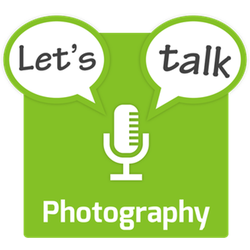Panel
- Bart Busschots (host) – @bbusschots – Flickr
In this solo show Bart tries to convince you to do the considerate thing and add alternative text to all the photos you share on social media. Sure, do it because it’s the right things to do, but don’t think of it as a chore, embrace it as an opportunity to improve your photography!
While this podcast is free for you to enjoy, it’s not free for Bart to create. Please consider supporting the show by becoming a patron on Patreon.
Reminder – you can submit questions for future Q & A shows at http://lets-talk.ie/photoq
Notes
Any of us who share our photos on social media know we should add alternative text, or alt text, to our photos to make them accessible to those with vision impairments. Lots of people are born less well able to see than most, those of us lucky enough to live long enough to get old are all going to start losing some or more of our vision, and plenty of people have accidents or get sick and lose their vision for a while, or maybe even permanently. We all empathise with those people, and we feel bad for not taking the time and effort to write the descriptions, but many of us still struggle to find the motivation to actually do it consistently.
I'm not going to spend this episode trying to win you over to doing the right thing because it's the right thing to do. I agree completely that it is, but others are out there making that case far better than I can. Instead, I'm going to take a different tack. Yes, you should add alt text because you're a kind and considerate person, but you should also do it because it can make you a better photographer in the process!
I'm going to be very honest in this instalment — I was one of those people who didn't add alt text because I was just too busy and I figured blind people wouldn't care about my photos anyway, so why bother? But for the past few years I've been putting in the time and effort to consistently describe all the photos I share on Mastodon and Bluesky, and wow, has it ever paid off for me, and mostly in ways I'd just never expected!
Before I share my own experiences, I want to describe the universal concept this little example falls under — the curb-cut effect.
The Curb-Cut Effect
Like so much of my understanding of design and how the world really works, I first learned about the curb-cut effect on a 2018 episode of the excellent 99% Invisible podcast. Don't let the episode's age put you off, it's truly ever-green content!
Curb cuts are those little slopes we now take for granted at the edges of our pavements when ever there's a pedestrian crossing or a junction. They were added to accommodate wheelchair users. Before curb cuts people confined to wheel chairs couldn't move around our urban environments independently, they were completely dependent on others to push them around and hoist them up and done onto and from pavements. Initially, they met strong resistance. As insane as it sounds now, people just did not want to go to all that effort re-arranging our roads just to help a few unfortunate wheelchair users get around — we just should give them helpers instead, that would be cheaper and kinder! Why would they even want to be independent anyway?
Obviously, that's paternalistic nonsense — of course wheelchair users want to be independent! Why would they not have the same desires as everyone else‽ Why would they not want that same buzz of independence we all got from our first bicycle and then our first car‽ That feeling of being able to where we wanted, and to do it when we wanted, and without needing anyone's help to do it!
So after a lot of impressive campaigning, curb cuts became common, then ubiquitous, and now they're so mundane we hardly ever even think about them. Obviously, that really helps wheelchair users get around. But it it's done more than that, much much more!
The thing is, accommodations for those with impairments of any kind never only help their intended benefactors, they always end up helping way more people! Every single person pushing kids around in strollers and buggies of all kinds benefits from those curb cuts each and every single day!
Curb cuts are not special — it really is a universal truth that making things more accessible helps everyone, not just those who need it most!
My Alt Text Conversion
The first time I met the concept of alt text was as a web developer. Initially there were guidelines that all web pages should add alt text to their images, and then there were formal standards that mandated them in some situations. So they were always on my mind as a developer, but not as a photographer.
It was being a part of Allison Sheridan's amazing community at podfeet.com that helped me see their importance in social media. Allison's community is a very welcoming place, and Allison has given accessibility a prominent role on her show for years, so her audience is much more diverse in every way than any statistically typical group, and that includes a lot of people with impairments of all kinds. Also, Allison never reviews a piece of software without testing its accessibility features, and that's tragically rare, even today.
Early social media apps didn't support alt text, so it wasn't a habit I got into from the start. Even as support started to be added, different social networks and different client apps did so at their own pace. There was never a single moment when social media went from not supporting alt text to supporting it, it just sort of slowly happened.
I'll be honest, I was slow to notice the ubiquity of alt text support on the social networks I use. It wasn't that I decided not to use the feature, it's that I never even thought to check for it. This kind of neglect by obliviousness really illustrates the difference between academically knowing a thing and truly knowing a thing. To my shame, I needed to be nudged, gently, into adopting alt text in my social media posts.
Initially, I was writing detailed and descriptive posts to go with the photos I shared, and I started to get some unusual back-handed compliments. The general gist was "even though you don't add alt text, your posts are so descriptive I can still get some value from following you despite being visually impaired". I was briefly proud of myself, then I realised I really shouldn't be! I was being complimented for being one of the more considerate of the inconsiderate people!
So I decided to start adding alt text. I really did mean well, but my hit rate was not great. I'd often simply forget Then, Elon bought Twitter and destroyed it, and I jumped ship to Mastodon and adopted the excellent Ivory client.
Because the app was new, I did something I rarely do — I spent some time going through all the app's settings, and then I found it — the option that finally got me to always write alt tags! Ivory has a toggle to enable a reminder when you try post a toot with an image that has no alt text I toggled that little toggle to on, and since then every photo I share on social media has a description for the visually impaired!
The Unexpected Benefits of Writing Alt Text
Unsurprisingly, it feels nice to know I'm being a considerate netizen, but it turns out taking the time to write alt text brings along some completely un-expected bonuses! Like those curb cuts that help so many more people than just wheelchair users, writting alt text helped me, not just the visually impaired!
There are boring practical advantages like search engine optimisation (SEO). If you make your living from clicks, that might actually be very important for you, but TBH, I don't really care. I guess it's nice to get a few more likes, but meh!
Before we go any further let me just address the artificially intelligent elephant in the room — yes, I know LLMs can generate passable descriptions in seconds, no, I'm not using them. Like I said, I've discovered that writing alt text has real advantages. It's the act of actually composing the text myself, with care, that has paid off for me.
Firstly, I'm finding it to be artistically fun to craft descriptions that match the feel of my photos. If a photo is playful, I'll write playful alt text. When I look at the photos I consider worthy of sharing, they often have a dominant artistic element — for some it's something to do with the colours, for some it's about the textures, for others it's the compositional structure, what ever it is, that's what I lead my descriptions with, then I add more text to fill in the rest of the relevant information after that.
This leads nicely into a related unexpected advantage — the act of writing alt text works as a final quality assurance step. I've found that if I struggle to decide what to lead my description with, that probably means the photo doesn't actually have artistic merit — if I can't figure out what to lead my description with, then the photograph probably doesn't have any wider value beyond being a snapshot that might act as a nice memento for me. It's probably worth keeping, just not sharing.
However, the greatest unexpected bonus of all is that it's really helping me to become a better photographer by forcing me to analyse my own work. I've been saying for years that the only way to keep honing a craft is to keep doing just that — thoughtfully critiquing your output. When you get a photo that really speaks to you, figure out why. When you fail to capture the majesty of an interesting subject adequately, reflect on why. What did you miss? It takes effort to make the time for this kind of self-reflect, and I was never great at actually doing it consistently. But now that I religioulsy write alt text that kind of relection has become utterly routine!
Because you can't describe a photograph well without really analysing it, I now spend more time critically analysing my photos now than I ever did before. I post about two photos a day on average (one some days, three others, but usually two). That means I thoughtfully examine 14 of my best photos every single week. Week, after week, after week. That's over 700 in a year! That's probaby 600 more than I used to
I know friend of the show Antonio Rosario has found great value in keeping a photo journal because it forces him to think and reflect. Well, I think alt text is my equivalent, my mechanism for ritualising deeply thinking about my photographs.
Final Thoughts
I really hope I've inspired you to start adding alt text to the photos you share, but more importantly, that you wont' think of it as a chore, or a sacrifice you do out of charity, but as the opportunity it really for helping others while you help yourself! The ultimate win-win


Pingback: Security Bits — 22 June 2025 - Podfeet Podcasts